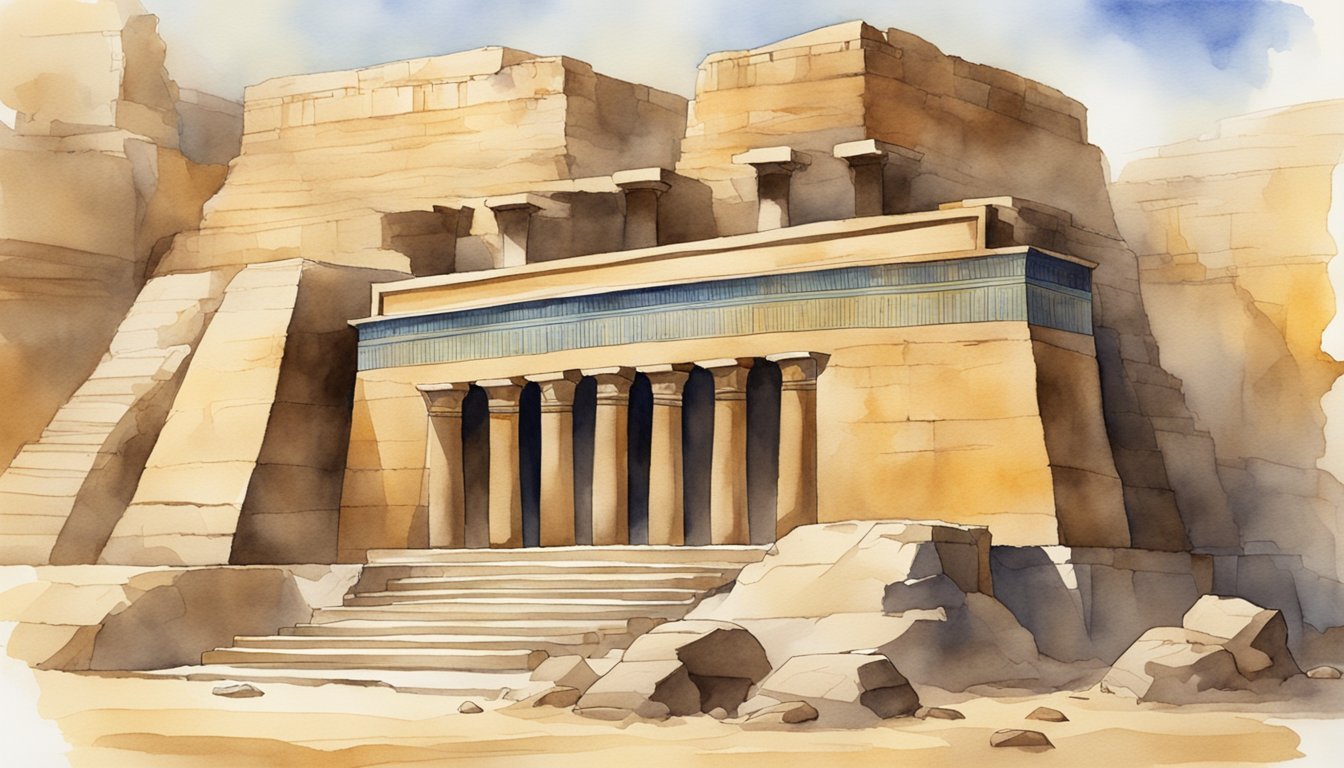Discovering Cleopatra’s Tomb
The quest to uncover the final resting place of Cleopatra, the last queen of ancient Egypt, is a tale tinged with intrigue and relentless dedication. As modern technology meets historical sleuthing, archaeologists inch closer to solving one of history’s most enduring mysteries.
Cleopatra VII: The Search Begins
The quest to find Cleopatra’s tomb began in earnest with the efforts of renowned Egyptologists and archaeologists from around the world. Cleopatra VII, the iconic figure famed for her beauty, intelligence, and dramatic life story, left behind a heritage that has captivated historians and the public alike.
The Excavation of Taposiris Magna
At the site of Taposiris Magna, a temple west of Alexandria, the search has focused on a complex of tunnels and subterranean chambers. The recent discovery of a 4,300-foot-long tunnel beneath this ancient temple has sparked excitement about the prospect of nearing Cleopatra’s tomb.
Influential Figures in the Hunt
Among the key figures in this search is Dr. Kathleen Martinez from the University of Santo Domingo, who has been at the forefront of the excavations at Taposiris Magna since 2005. Her persistent work has brought new vigor to the search. In addition, Zahi Hawass, a prominent Egyptologist, has played a significant role in Egyptian archaeological endeavors.
Technological Advances in Archaeology
Technological innovations have propelled archaeological methods forward, allowing for non-invasive ground scanning and improved analysis of artifacts and structures. These advancements have provided vital information without the need for extensive physical excavation, preserving the integrity of the historical sites.
Challenges and Controversies
The hunt for Cleopatra’s tomb is not without its challenges, facing issues from preservation concerns to debates about the authenticity and significance of potential discoveries. The Egyptian Ministry of Tourism and Antiquities often weighs in on these discussions, guiding the delicate balance between exploration and conservation.
Historical Context and Impact

The discovery of Cleopatra’s tomb could not only solve one of the great archaeological mysteries, but it also has the potential to provide new insights into the end of the Ptolemaic period and the culture of the Mediterranean region during the 1st century BCE.
The Life and Reign of Cleopatra
Cleopatra VII, the final pharaoh of Egypt, reigned from 51-30 BCE and is remembered for her sharp intelligence, persuasive charm, and complex relationships with powerful Roman figures. Her reign marked the tumultuous end of the Ptolemaic Kingdom and positioned her as a significant figure in both Egyptian and Roman histories.
Taposiris Magna and Religious Significance
The temple of Taposiris Magna, a significant site near Alexandria, is currently a focal point for historians searching for Cleopatra’s resting place. The temple’s dedication to Osiris and its alignment with the principles of Isis-worship reflect the deep religious undertones of the period, showcasing the blend of Greek and Egyptian religious practices that characterized the Ptolemies’ rule.
Cleopatra’s Relationships and Alliances
Cleopatra is famed for her strategic liaisons with Julius Caesar and Mark Antony, two of Rome’s most powerful men. These relationships were not just driven by personal attachment but were pivotal political moves that could have changed the landscape of the Mediterranean had they succeeded against Octavian, the future Roman Emperor.
Ancient Egypt’s Influence on Modern Culture
The rich tapestry of Ancient Egypt’s culture, stories, and leadership under figures like Cleopatra continue to captivate contemporary audiences, through documentaries and scholarly works. This enduring fascination underscores Egypt’s significant contribution to the heritage and cultural narrative of the modern world.
Preserving Heritage for Future Generations
Efforts to preserve Egypt’s historical sites, led by bodies like the Ministry of Tourism and Antiquities, are invaluable for protecting the memory of ancient figures and ensuring that the legacy of Cleopatra and her contemporaries can be appreciated for centuries to come. Through ground-penetrating radar and other non-invasive technologies, archaeologists are respecting the sanctity of potential burial sites while pursuing their research. These advanced methods not only aid in locating hidden tombs but also help preserve delicate artifacts that could be damaged by traditional excavation techniques. Similar approaches have been used in bog bodies discovery, where scientists employ non-invasive scans to study remains without compromising their integrity. By integrating these technologies, researchers can deepen our understanding of Egypt’s past while maintaining the respect and preservation such sites deserve.

